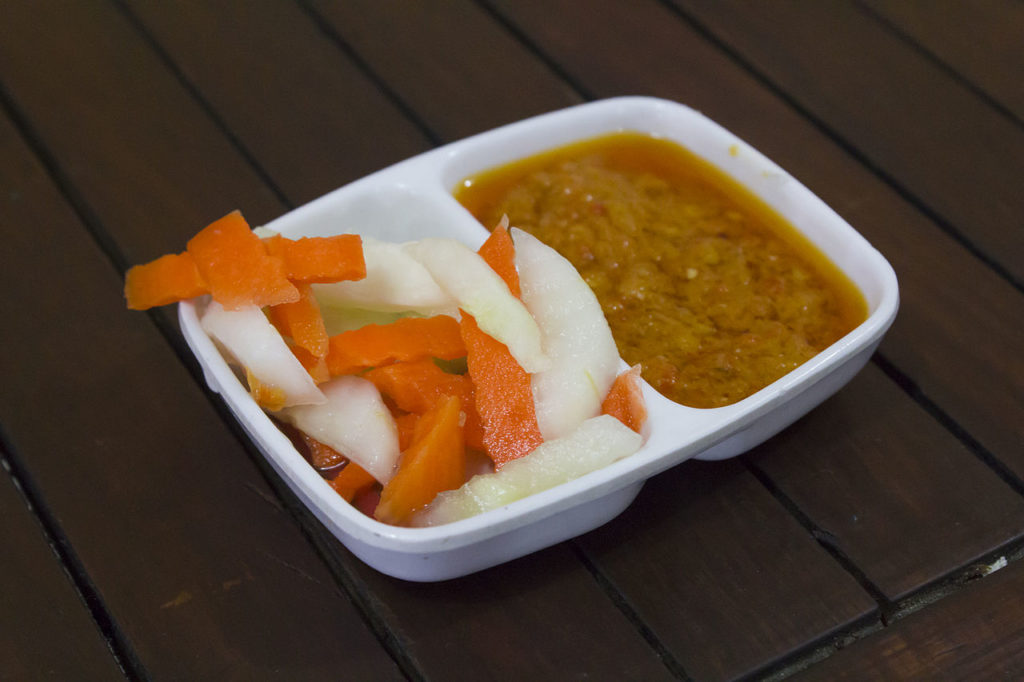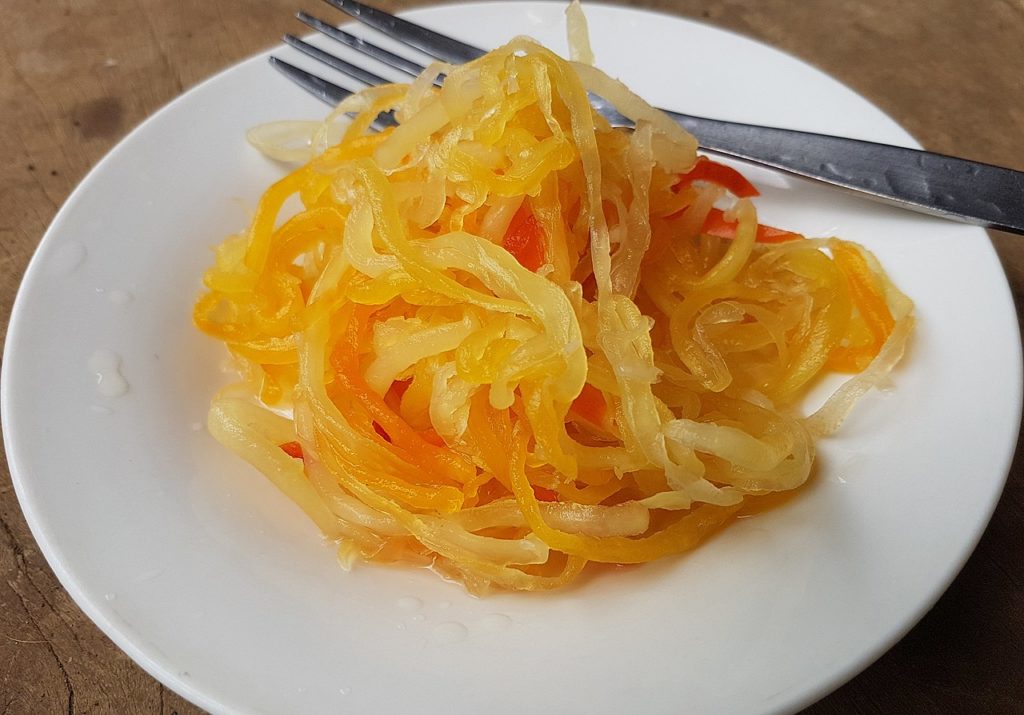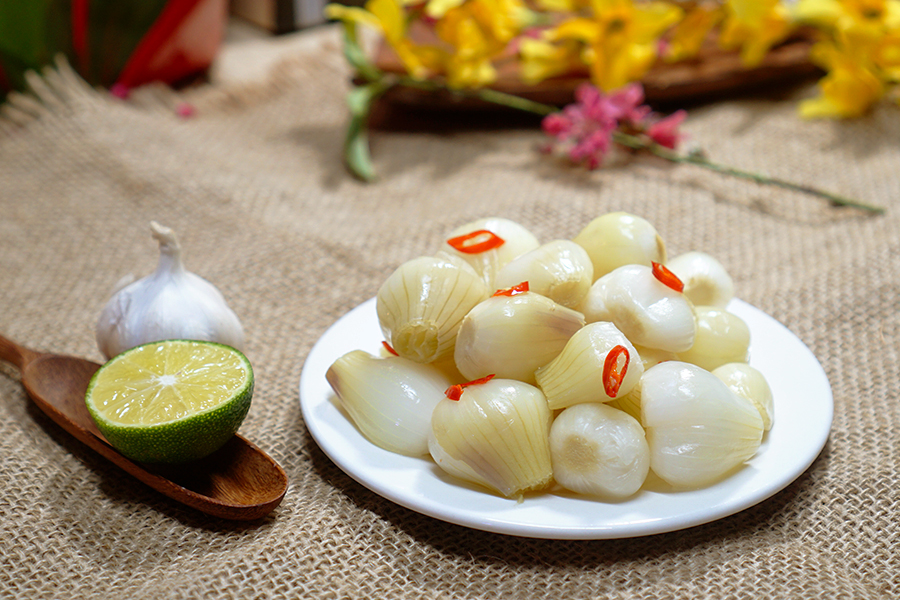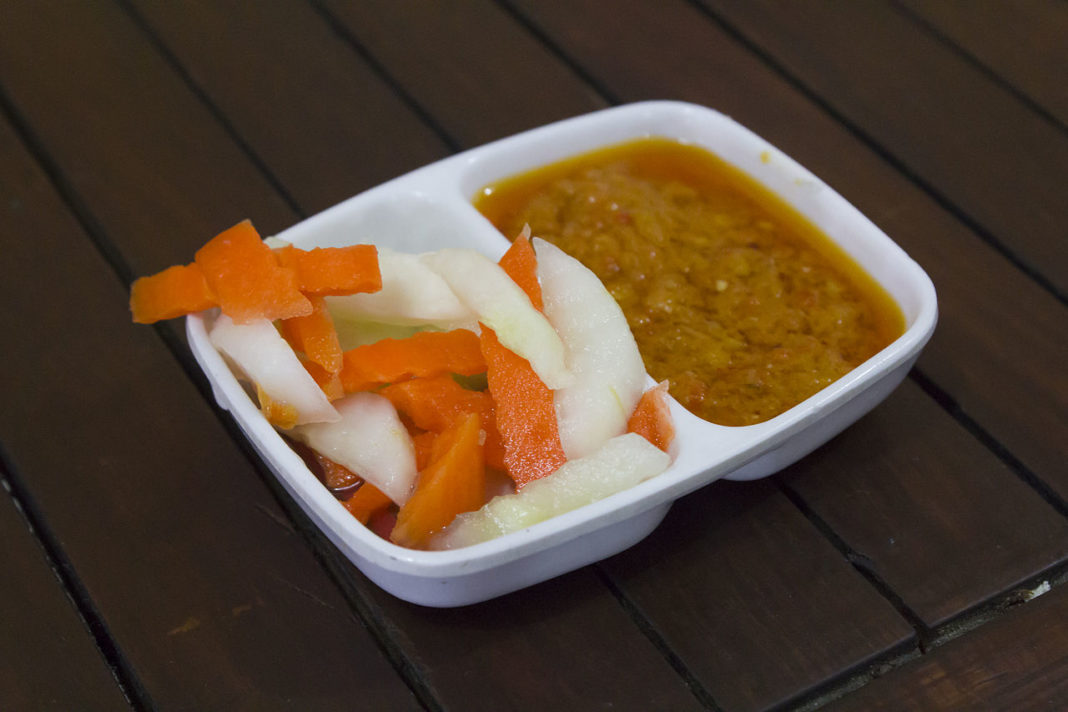Acar – Indonesia
Acar is a traditional mixed vegetable pickle that usually consists of cabbage, carrots, cucumber, or long beans that are generously spiced with chilis and sliced shallots. All the vegetables are cut into thin strips or diced into larger chunks before they are mixed with a salty, lightly sweet water and vinegar brine.
 Acar is used as a topping for noodles and rice or as an accompaniment to grilled or fried dishes and curries. The varieties of acar spread throughout Indonesia; they often incorporate various spices and fruits such as mango or pineapple. Acar is commonly prepared in Malaysia and Singapore, where it is traditionally made with a spicy peanut paste.
Acar is used as a topping for noodles and rice or as an accompaniment to grilled or fried dishes and curries. The varieties of acar spread throughout Indonesia; they often incorporate various spices and fruits such as mango or pineapple. Acar is commonly prepared in Malaysia and Singapore, where it is traditionally made with a spicy peanut paste.
Atchara – Philippines
Atchara is the famous Filipino green papaya pickle usually enjoyed as a condiment alongside authentic Filipino dishes. Next to long strips of unripe papaya, it can employ a variety of other vegetables such as carrots, onions, daikon radish, and bell peppers or chili peppers.
 It may also include pineapple chunks or sweet raisins. The vegetables are occasionally grated, but more commonly julienned, which gives atchara an unusual, crispy texture. The heated marinade, which combines vinegar, sugar, ginger, garlic, salt, and peppercorns, is poured over the vegetables, and the relish is pickled until all the flavors develop.
It may also include pineapple chunks or sweet raisins. The vegetables are occasionally grated, but more commonly julienned, which gives atchara an unusual, crispy texture. The heated marinade, which combines vinegar, sugar, ginger, garlic, salt, and peppercorns, is poured over the vegetables, and the relish is pickled until all the flavors develop.
Pickled Shallots (Dưa hành) – Vietnam
This traditional Vietnamese pickle is prepared with whole onion bulbs that are preserved in a mixture of rice vinegar or white vinegar, water, salt, and sugar. Dưa hành is typically homemade, and it can occasionally include chili peppers and sliced ginger.
 The pickle is a staple on Lunar New Year when the onions are traditionally served with jellied pork (thịt đông) and bánh chưng rice cakes.
The pickle is a staple on Lunar New Year when the onions are traditionally served with jellied pork (thịt đông) and bánh chưng rice cakes.
Thai Pickled Mango (Mamuang dong) – Thailand
Mamuang dong is the name for Thai-style pickled mangoes. The pickled mangoes are usually made with a combination of sour mango slices, sugar, salt, water, rice vinegar, and rice wine or dry sherry. The rice vinegar, rice wine, and water are brought to a boil in a large pan.
 The mango slices, salt, and sugar are added to the pan and cooked for a few minutes. The mixture is cooled and placed in sterilized jars, then left to sit for two weeks before consumption.
The mango slices, salt, and sugar are added to the pan and cooked for a few minutes. The mixture is cooled and placed in sterilized jars, then left to sit for two weeks before consumption.
According to tasteatlas.com














